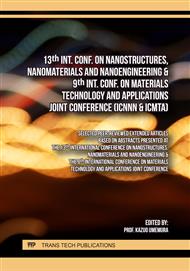p.17
p.39
p.45
p.51
p.59
p.67
p.75
p.81
p.87
Revealing the Broadband Terahertz Faraday Rotation Mechanism in Rare-Earth Doped Yttrium Iron Garnets
Abstract:
As a magneto-optical effect, the Faraday effect depends on the Verdet constant of the magnetic materials and enables integrated optical modulators and nonreciprocal photonic devices. Ferrimagnetic garnet, e.g. yttrium iron garnet (YIG) is the most studied material for terahertz (THz) Faraday effects. However, current works neglect the correlation between the Verdet constant and the electromagnetic (EM) parameters, which is vital for the design of high-performance THz non-reciprocal devices. Here, we investigate the mechanisms of the broadband THz rotations in undoped YIG and rare-earth doped YIG (La-doped) by polarization-sensitive THz time-domain spectroscopy. We observe a frequency-independent THz rotation angle (11/30 degree/mm) and related Verdet constant (70/170 degree/mm/T) for the YIG/ La-YIG, and further retrieve the EM parameters of YIG within the test range (0.3-2.5 THz). Based on these results, we establish a systematic methodology to describe the connections between the THz Faraday effects and corresponding materials. Our works provide critical foundation for the design and applications of the low-loss nonreciprocal THz devices in the future.
Info:
Periodical:
Pages:
59-65
Citation:
Online since:
March 2025
Authors:
Price:
Сopyright:
© 2025 Trans Tech Publications Ltd. All Rights Reserved
Share:
Citation:



